Here is a simple DIY guide on how to replace the fuel pump on Volvo S40 and V40 from 1996 to 2004.
The fuel pump sender unit might look different on the Phase 1 cars (1996-2000).
The 1.9D, 1.9TD and 1.8 GDI S40 and V40 don’t have the pump in the sender unit and instead use the high pressure pumps in the engine compartment.
First of all you need to disconnect the car battery, as fuel is highly flammable. Make sure you have the Radio code for your stereo when disconnecting the battery. Avoid smoking or anything that may cause any sparks and make sure you have the rear doors or windows open for ventilation. Fuel fumes may smell nice and give you a high, but they are not good for you….
You now need to remove the rear seats. Lift the bases up and undo these 4 bolts and remove the seats out of the way
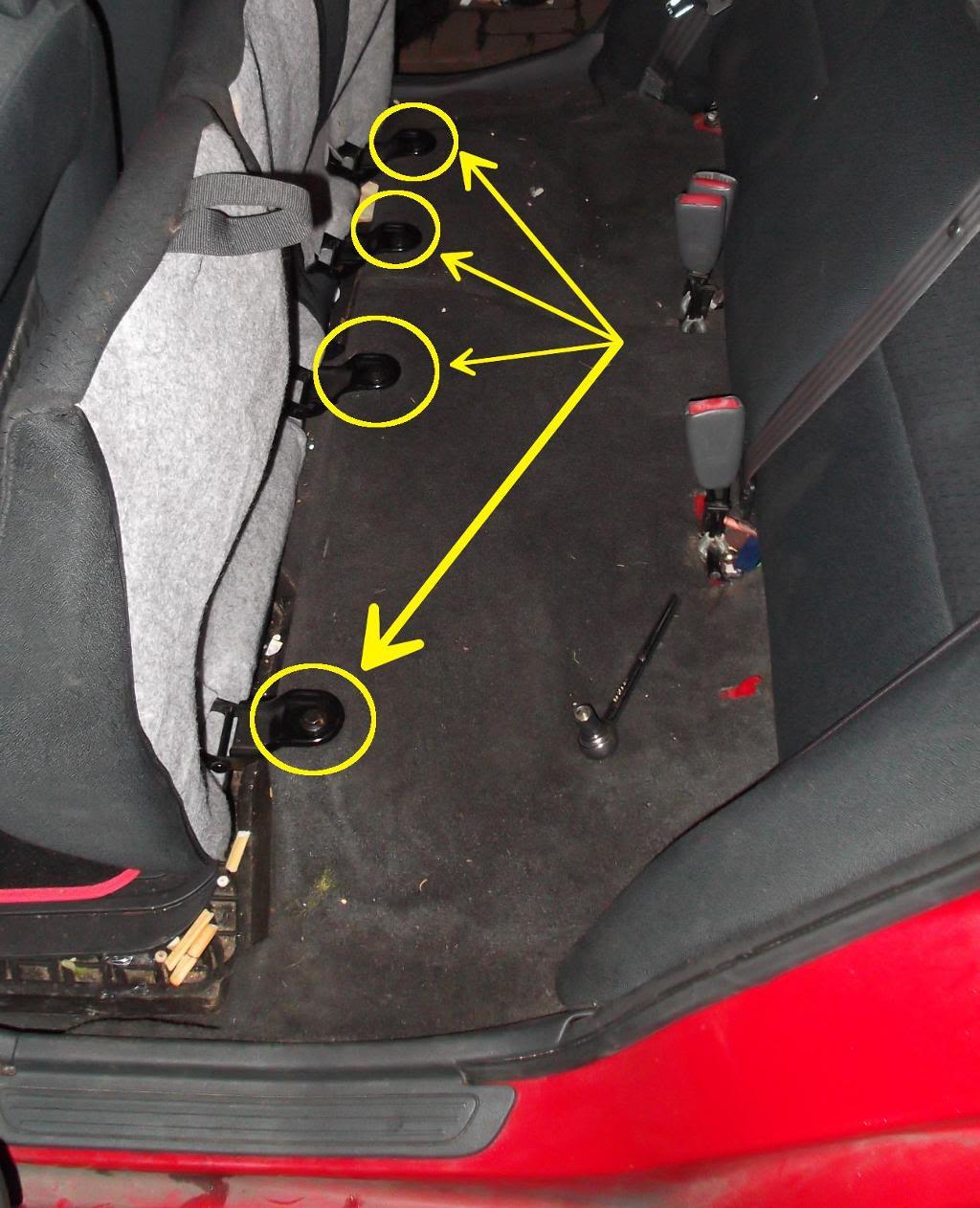
Then lift the carpet carefully and move it aside tucking the edges in the footwell areas so it stays there. Undo the four screws securing this top metal cover and remove it

You will now see another metal cover which seems to offer some extra protection and hold the pump/fuel deposit secured (only guessing here). Just lift it up and out of the way. You might need a screwdriver to lever it out, but most times it should just come out.

Now you can see the top of the fuel pump. Use a marker pen and mark a small line or dot where the pump body is in relation to the metal car body (Many thanks to Keith (960kg) for pointing this out to me)
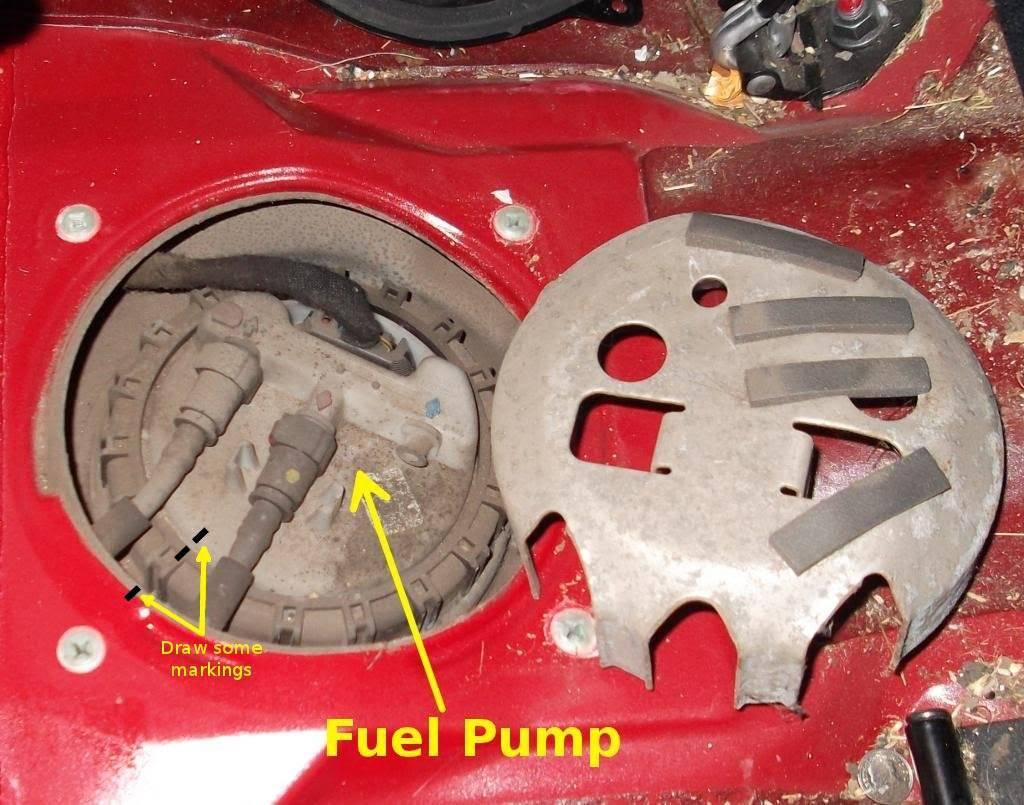
Now you need to unclip the top connector which powers the fuel pump. Then you need to carefully remove the fuel line connectors. NOTE the connections for the fuel lines to avoid confusion when you are putting everything bck together. To remove the fuel lines you need to push in these two clips as seen in the next photo (one is red and other is black) and pull out the fuel lines. Make sure you have some sort of cloth or kitchen towels handy, as there will be a tiny bit of fuel spillage when disconnecting the fuel lines.
Move the fuel lines and power cable aside (I personally found it easier to tuck them under). You now need to remove the black ring/plastic nut/top cover securing the fuel pump to the tank. There is a special Volvo tool (9995622) for this which I don’t have. I personally used a blunt large flat blade screwdriver (or a piece of wood) (positioned at the tip of the green arrow) and used a mallet to gently push the ring anticlockwise. After a few knocks (1-2 turns of the ring, you should be able to turn it by hand (both hands) and unscrew it.
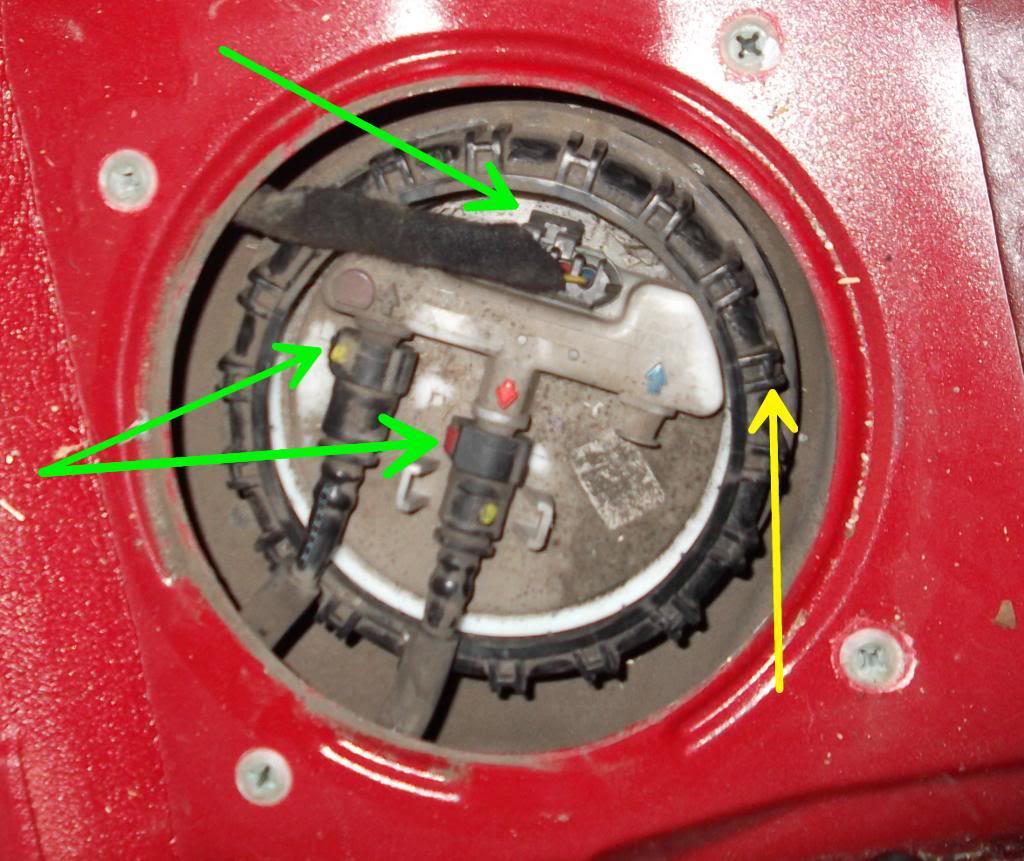
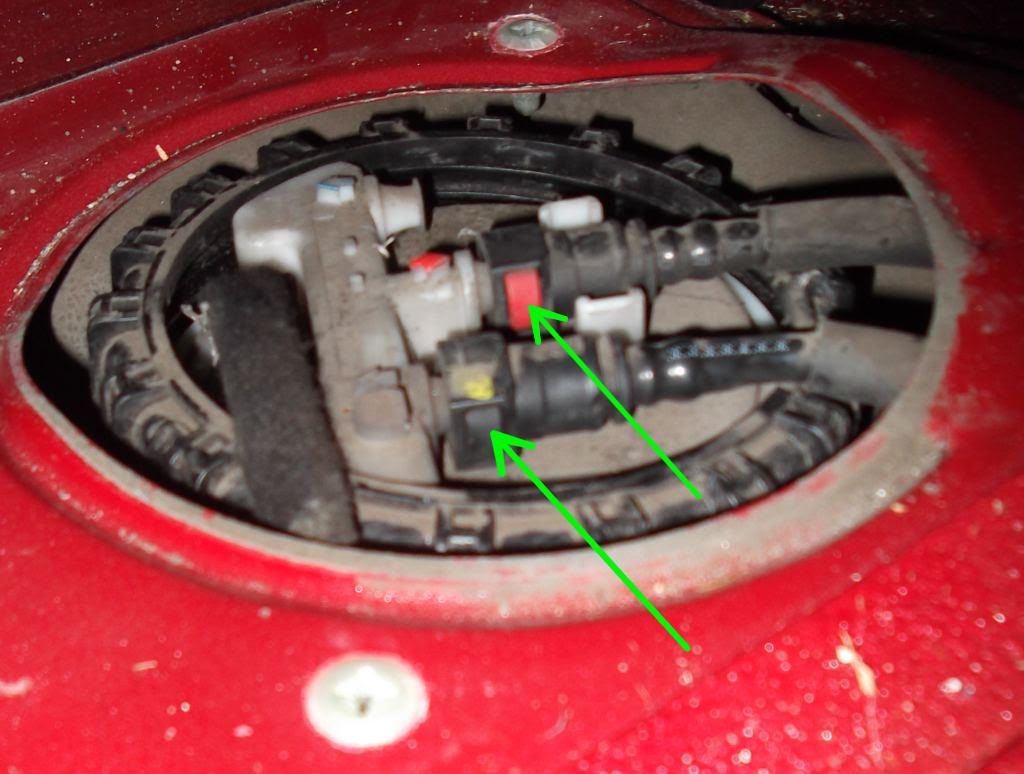
Remove the black ring out of the way and lift up the fuel pump unit carefully, so you don’t bend the metal rod of the floater. I found that after I raised the pump unit a couple of inches, I tilted it a bit forward and wiggled it out. JOB DONE!!!
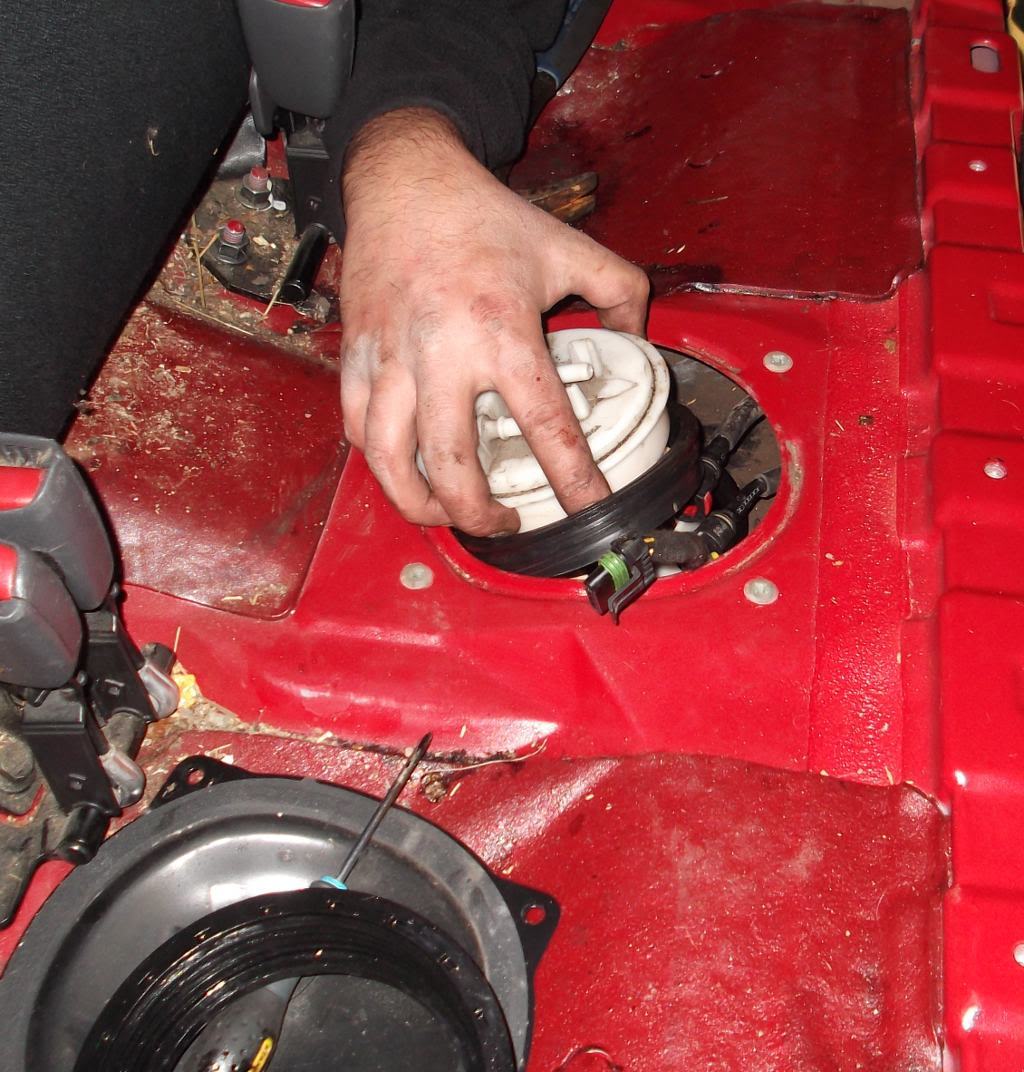
When you want to put the pump back in, I found it easier to place the rubber seal around the fuel pump unit on the opening of the fuel tank and then push in the fuel pump unit in (see green arrow). Tighten the black ring to 50Nm
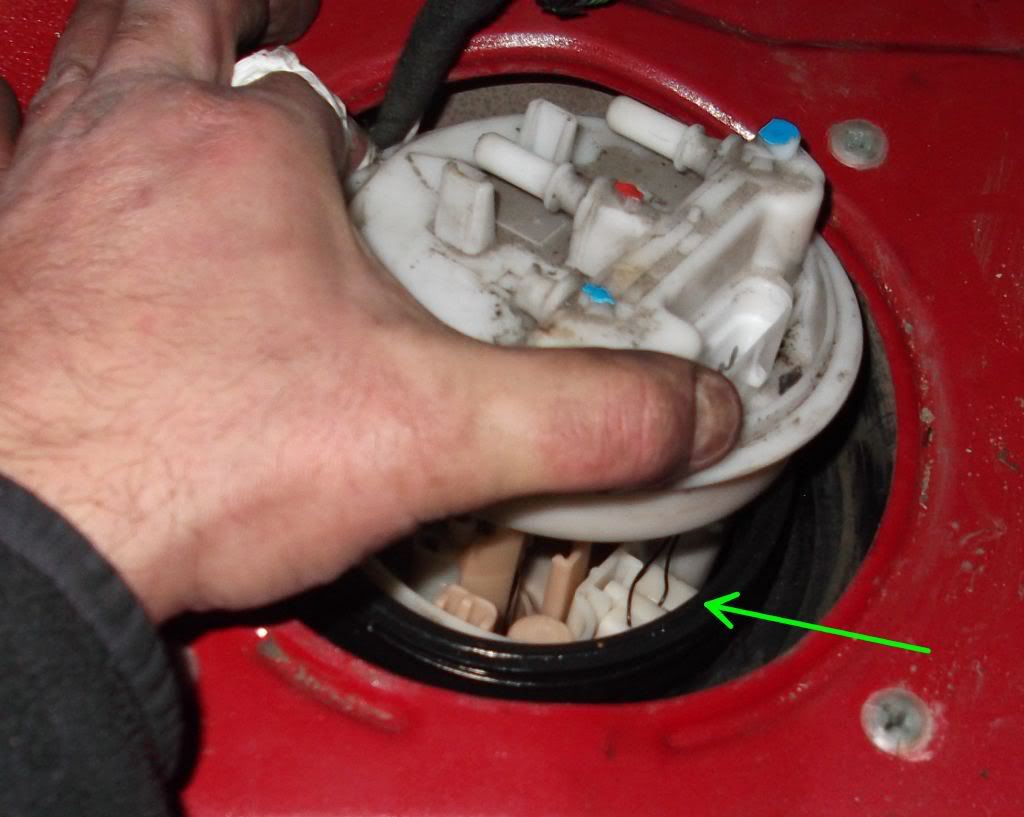
And a few more photos of the fuel pump sender unit
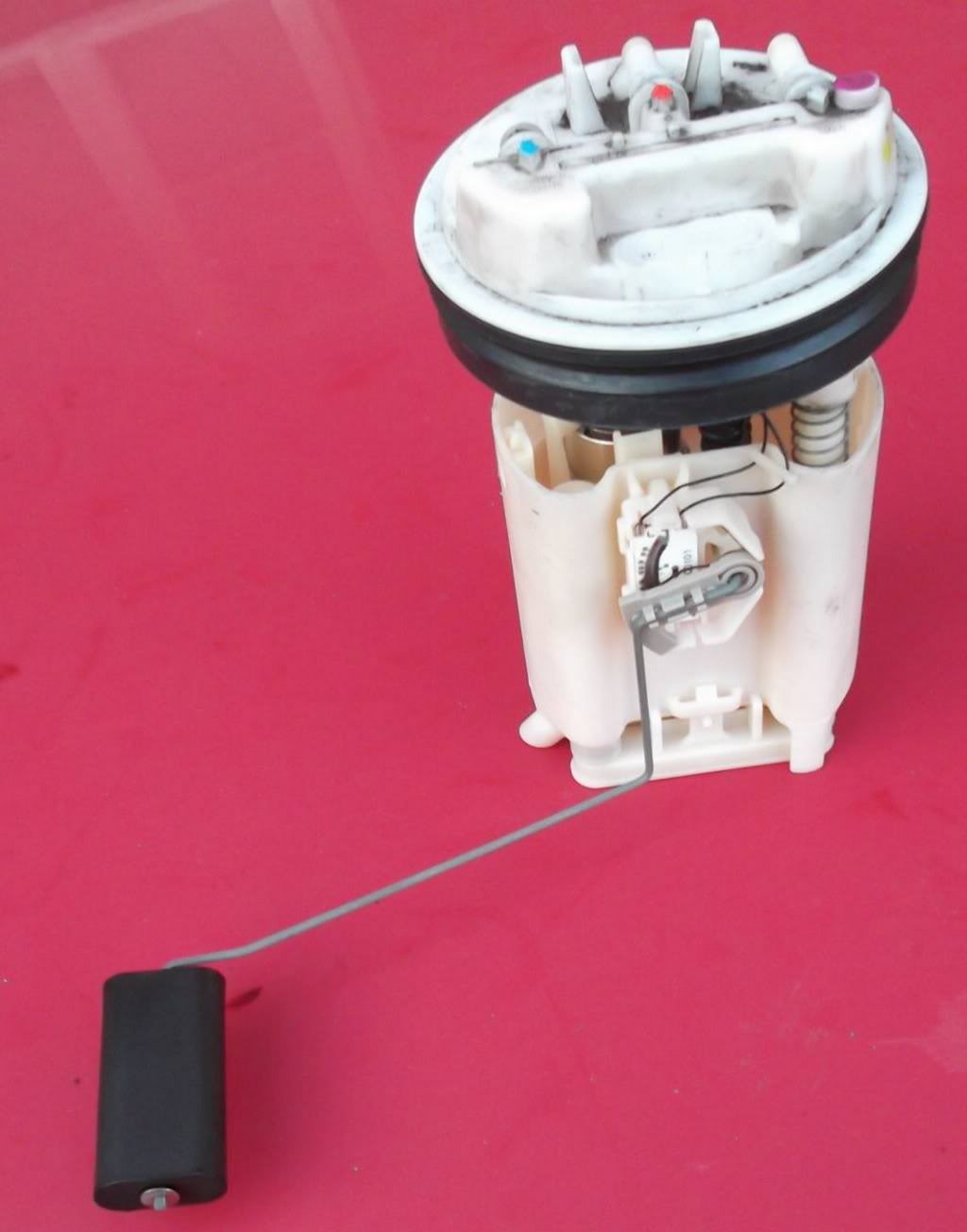
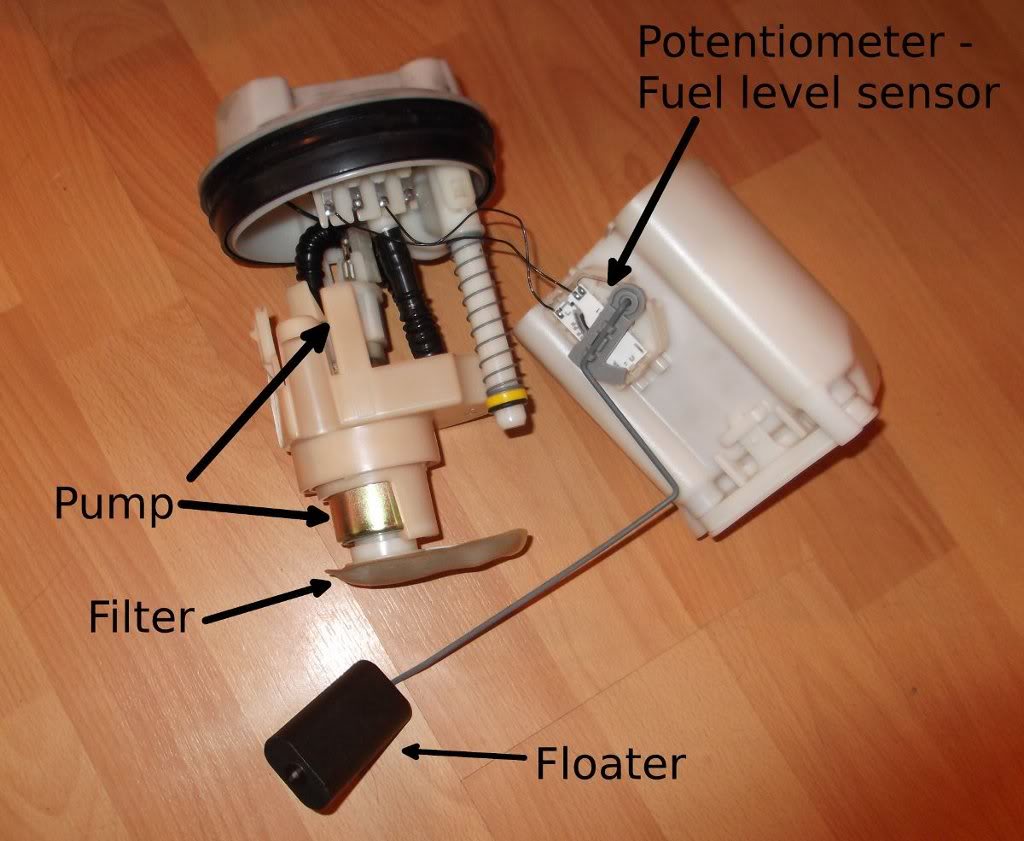
Close-up photo of potentiometer / fuel level sensor. If your fuel gauge is reading the fuel level incorrectly, give the contacts a good wipe to clean them
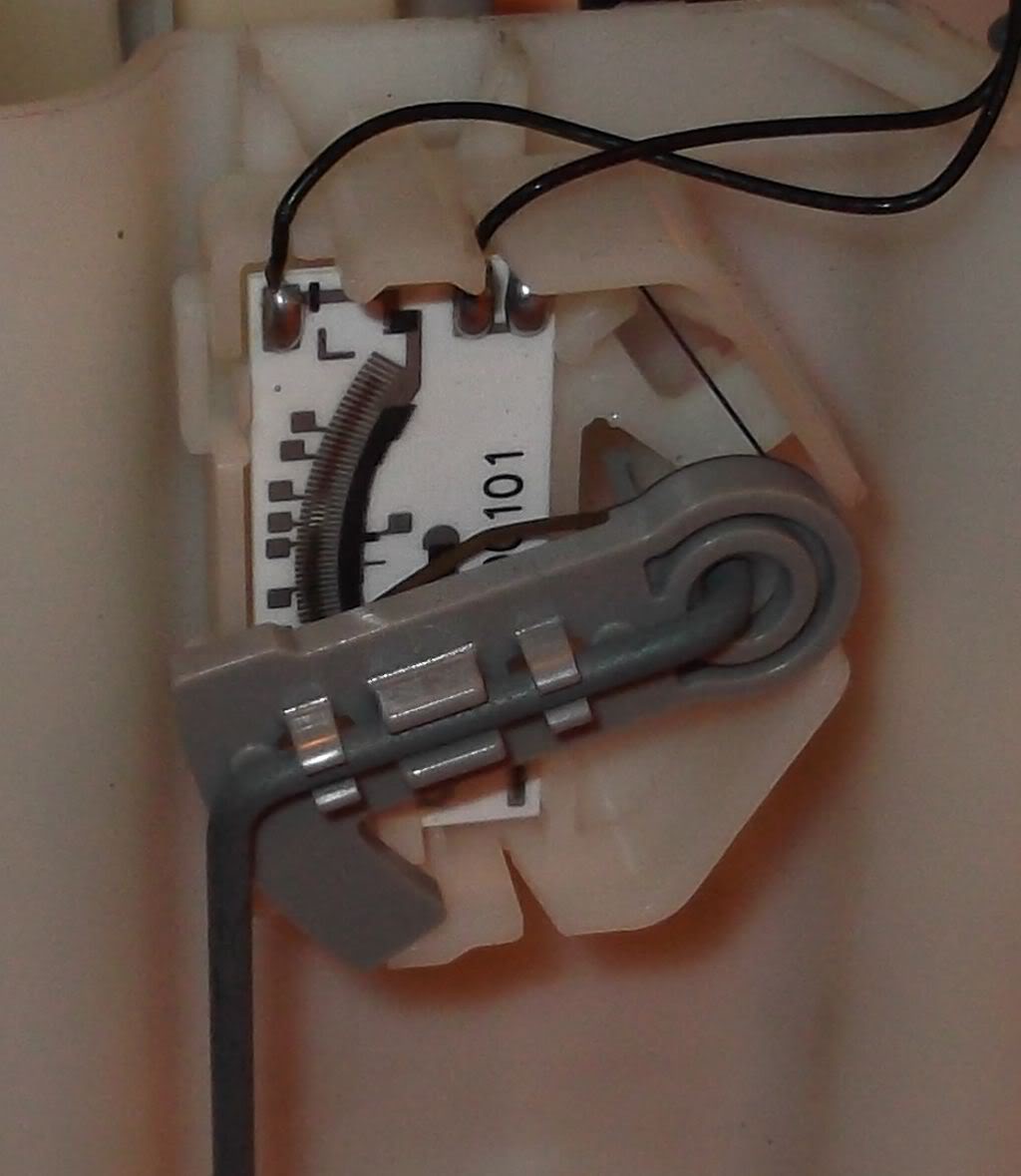
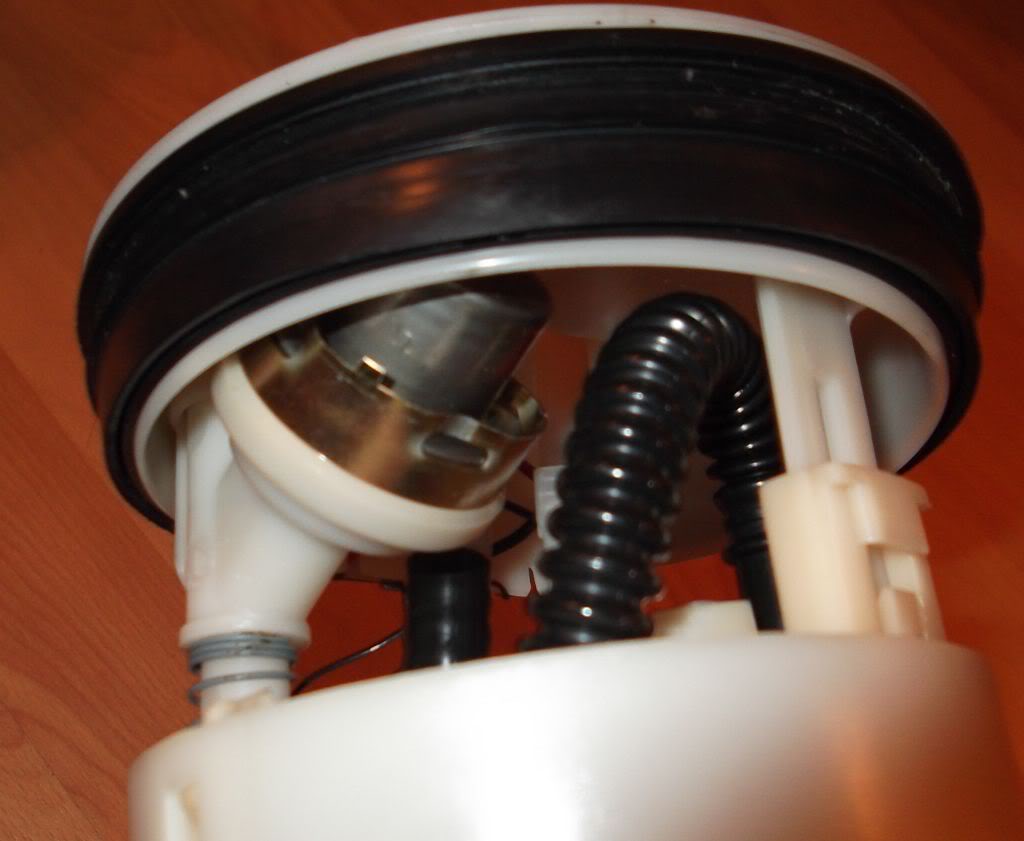
Hopes this helps some people and please take care when following this guide.
This tutorial was contributed to www.volvohowto.com by it’s author “gatos”. Original posted in Volvo Owners Club Forum
The instructions in this tutorial will work in the following models / years:
– 1995, 1996, 1997, 1998, 1999, 2000, 2001, 2002, 2003 and 2004 Volvo S40
– 1995, 1996, 1997, 1998, 1999, 2000, 2001, 2002, 2003 and 2004 Volvo v40

Jim says:
This is very helpful for when I’m ready to remove. However, my problem is that the dashboard gauge is telling me I’m out of fuel when a half tank is left. I wonder if a cleaning is going to solve this problem. If not, what caused it and should I replace the potentiometer (if that part is even available). If you have any insights on this, please let me know. Thanks for a very good tutorial.